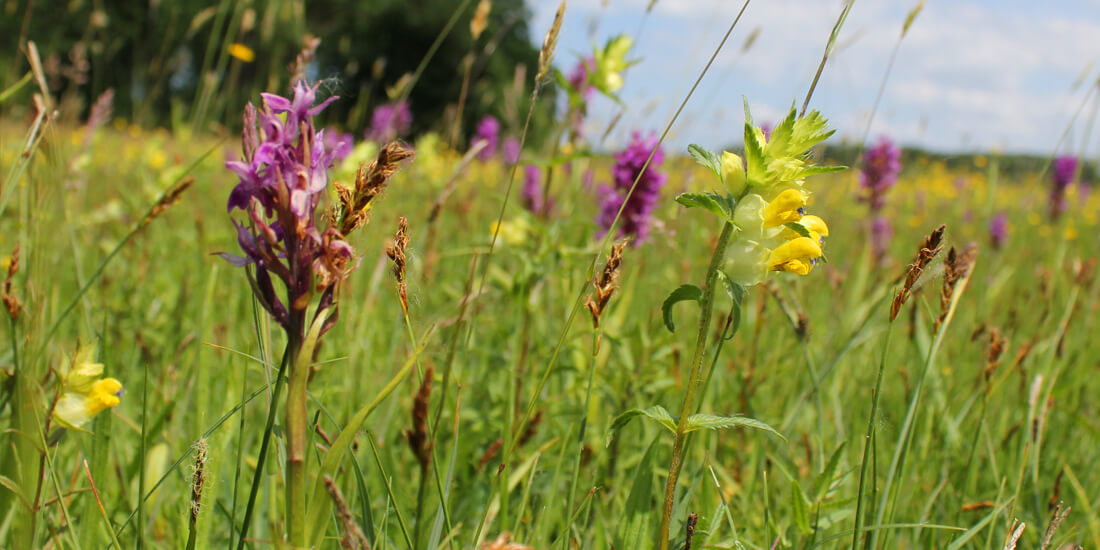How to sow Yellow Rattle

Yellow rattle is often described as the ‘meadow maker’ due to its ability to weaken vigorous grasses within a meadow, allowing other wildflowers to flourish. As a result, it is a semi-parasitic wildflower plant as it soaks up and feeds off the nutrients that neighbouring grasses need. Join us as we explore the benefits of adding yellow rattle to your garden and explain how to sow yellow rattle.
Once you know how to sow Yellow Rattle and when you've sown your wildflowers, and they've grown and established, Yellow Rattle will allow for other wildflowers to grow and establish without the threat of grasses or weeds taking over.
Tips on how to sow Yellow Rattle
Whilst sowing Yellow Rattle has its benefits, it can be difficult to get established and is only necessary in certain instances. With all wildflower meadow seedbed preparation, we recommend you remove all grasses, weeds, or flora before sowing. Preparing a seedbed for sowing wildflowers is easily achievable in a small garden plot. However, larger areas taken over by meadow grasses can be hard work, and this is where Yellow Rattle can help!
If you have an area like this and have decided to sow Yellow Rattle, there are a few things you should know.
When to sow Yellow Rattle?
Yellow Rattle is an annual wildflower, so it needs to be sown at a certain time of year to achieve the desired results. The process for sowing Yellow Rattle should begin at the end of summer when you mow the area as short as you can and make sure you remove the clippings.
Heavily scarify the area before sowing
Following this, you should heavily scarify the area to achieve at least 50% bare/exposed soil. When you sow your Yellow Rattle seeds, they need to make contact with the soil and become embedded. Typically, any wildflower seed requires consistently freezing temperatures to germinate in a process called stratification. However, we store our wildflower seeds in cold conditions all year round, so they are ready to sow anytime!
We would recommend, however, not leaving the sowing of Yellow Rattle any later than November so as not to delay a spring showing.
In summary, here is how you should sow Yellow Rattle:
- Cut your grass as short as possible at the end of summer and scarify your existing meadow/grassland with an aim to achieve 50% bare/exposed soil
- Sow your Yellow Rattle before winter sets in (do not leave sowing any later than November) – it will germinate and bloom in early spring and begin to weaken the existing grasses
- Scatter the seed at a rate of 5g per m2 and rake the seed so that it is in amongst the soil
- Water the just-sown wildflower seed well
- If you are sowing in drought conditions, keep the area moist for the first six weeks after sowing
Although Yellow Rattle is an annual wildflower, you shouldn’t need to add more in subsequent years as it will produce more seeds and drop them into the soil. Check out our wildflower management guide for advice on how to care for your wildflower meadow throughout the year.